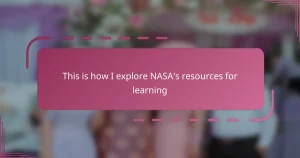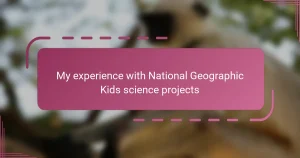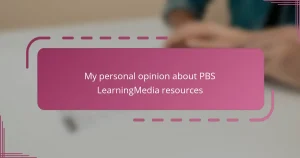Key takeaways
- Science museums provide hands-on learning experiences that inspire curiosity and make complex concepts accessible for children.
- Planning visits with specific goals, focusing on a child’s interests, and incorporating breaks enhances the overall experience and learning retention.
- Interactive activities foster collaboration, boost confidence, and encourage a love for learning, turning museum visits into lasting memories.
- Reflective moments during visits deepen understanding and strengthen the bond between parents and children while promoting natural exploration.
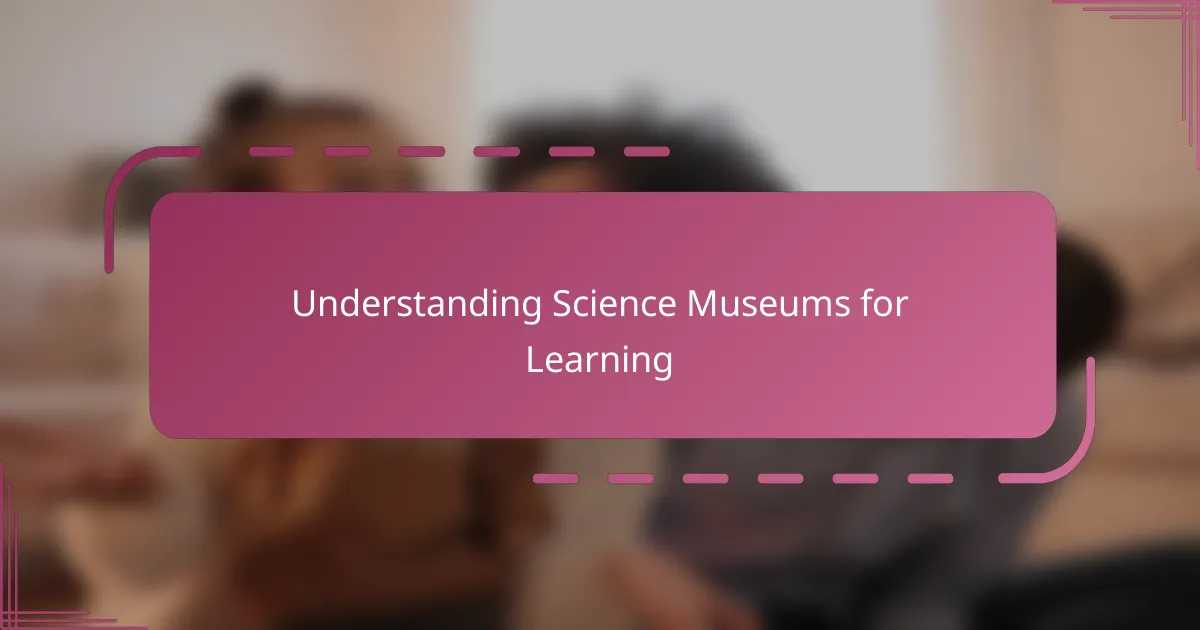
Understanding Science Museums for Learning
Science museums are much more than just displays of gadgets and fossils; they offer a hands-on approach that makes learning feel like an adventure. I remember watching my child’s eyes light up as they interacted with an exhibit on electricity—suddenly, abstract concepts became tangible and exciting. Isn’t it amazing how a simple touch or experiment can spark genuine curiosity?
What I find most valuable about these museums is how they cater to different learning styles. Whether your child loves reading, watching, or doing, there’s something designed to engage them deeply. This diversity in approach helped me appreciate how science can be accessible and fun, not just a subject in school.
Have you ever wondered why some lessons just stick while others don’t? For me, science museums create experiences that linger because they connect knowledge with real-world applications. That’s the magic—learning becomes memorable when it’s experienced firsthand.
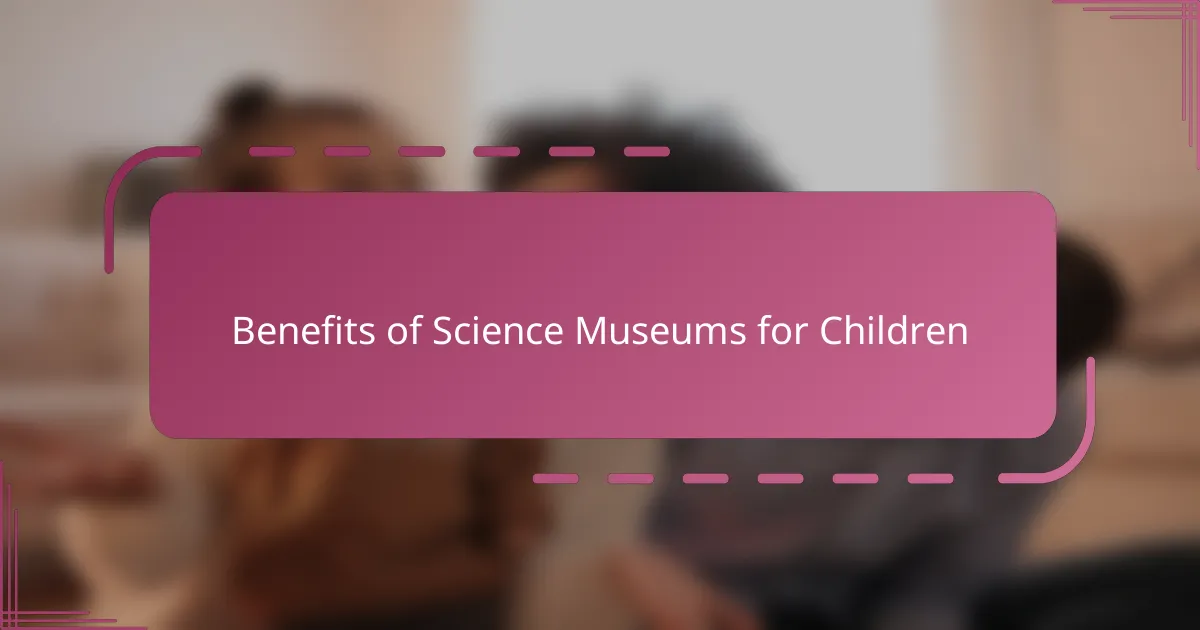
Benefits of Science Museums for Children
One of the biggest benefits I noticed is how science museums make complex ideas simple and fun. Watching my child manipulate models and see cause-and-effect in action brought science out of textbooks and into their everyday thinking. Isn’t it something special when learning feels like play rather than a chore?
I’ve also seen how these museums boost confidence. When children figure out experiments by themselves, that little spark of achievement sticks with them. Have you ever seen your child beam after solving a puzzle or making a discovery? That pride in problem-solving is priceless.
Finally, science museums encourage curiosity beyond the visit. After one trip, my child started asking questions about the stars and planets every night. It’s clear to me that these experiences plant seeds of wonder that grow long after you leave the building. Wouldn’t you love to nurture that kind of endless exploration?
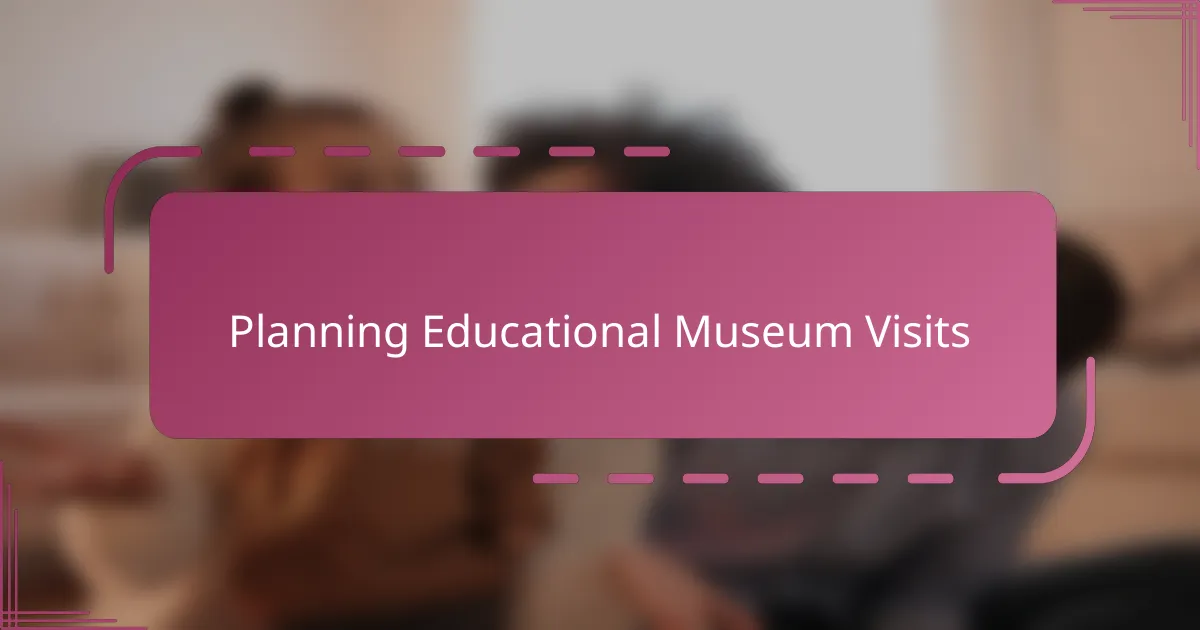
Planning Educational Museum Visits
When planning a visit to a local science museum, I’ve learned that checking the museum’s schedule ahead of time makes a huge difference. Some places offer special workshops or guided tours that can turn a simple visit into a memorable learning adventure. Have you ever noticed how a little preparation can turn curiosity into excitement before you even arrive?
I also make it a point to consider my child’s interests when choosing exhibits to explore. For example, if my child is fascinated by space one day, we prioritize that section so their enthusiasm stays alive throughout the visit. It’s surprising how focusing on what sparks their imagination helps keep their attention longer and makes learning feel personal.
Lastly, I always build in some downtime during our visit. Science museums can be overwhelming with so many interactive displays, so taking breaks lets my child process what they’ve seen without feeling rushed. Have you found that pacing the experience keeps your child engaged and eager to discover more? For me, it’s all about balancing fun with learning to make those visits truly effective.
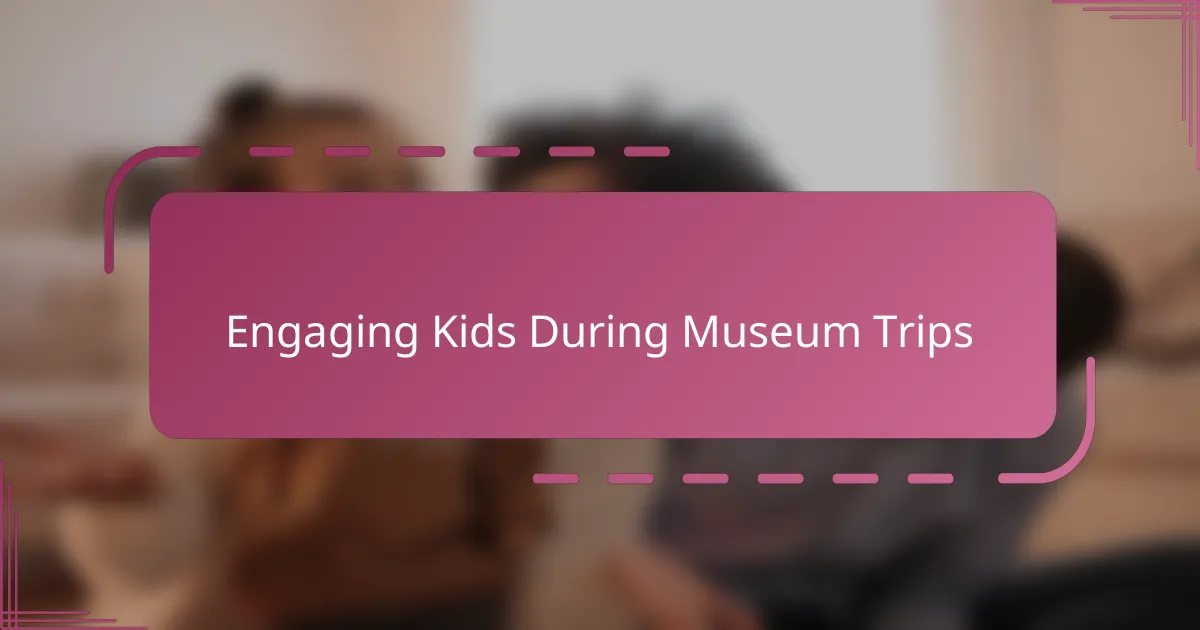
Engaging Kids During Museum Trips
Keeping kids engaged during museum trips can be a bit of a challenge, but I’ve found that asking questions as we explore really helps. When my child started wondering aloud about how a particular experiment worked, it opened up a conversation that made the experience much richer for both of us. Have you tried turning exhibits into little mysteries to solve together?
Another trick I use is to let my child lead the way, choosing which exhibits to spend more time with. This sense of control seems to spark their natural curiosity and keeps boredom at bay. I remember once spending almost an hour at a dinosaur exhibit simply because my child was so captivated by all the interactive features—no prompting needed!
Sometimes, the simplest things make the biggest difference. Taking moments to pause and reflect on what we’ve seen lets my child absorb information without feeling overwhelmed. I’ve noticed that these little breaks make them eager to dive back in rather than feeling ready to call it a day. Isn’t it great when learning feels like an adventure instead of a race?
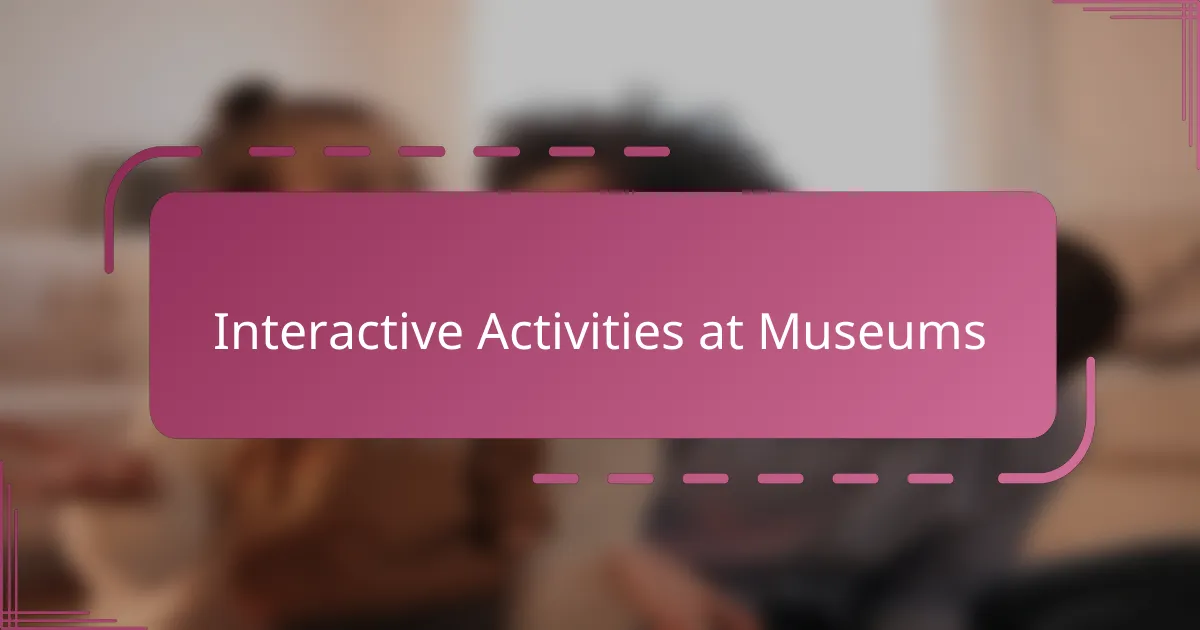
Interactive Activities at Museums
Interactive activities truly bring science museums to life. I’ll never forget the delight on my child’s face while building circuits in a hands-on workshop; the moment they lit up a bulb felt like a small victory. Have you seen how these tactile experiences turn abstract ideas into moments of joy and discovery?
What strikes me most is how these activities encourage collaboration. Watching my child team up with other kids to solve challenges not only strengthened their understanding but also their social skills. Isn’t it amazing how learning can be both fun and a way to connect with others?
Sometimes, the spontaneity of these interactions surprises me. We stumbled upon a virtual reality experiment exploring the ocean depths, and my child couldn’t get enough. That immersive experience sparked questions I never expected, proving that engaging activities can ignite curiosity in the most unexpected ways. Wouldn’t you agree that such moments are priceless for nurturing a lifelong love of learning?
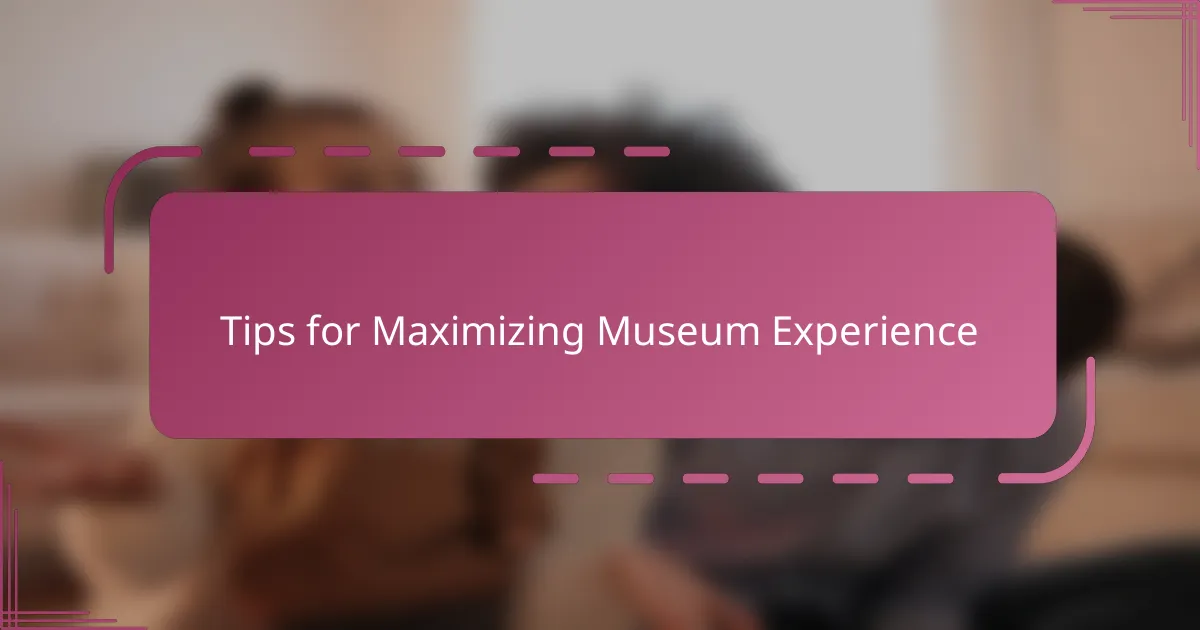
Tips for Maximizing Museum Experience
One thing I’ve found incredibly helpful is setting specific goals before walking through the doors. For example, I decide we’ll spend extra time on one exhibit my child’s excited about, rather than rushing through everything. Have you noticed how focusing on a few highlights can make the visit feel more meaningful and less overwhelming?
I also like to pack a small notebook or use my phone to jot down interesting facts or questions that pop up during the visit. Later, we revisit these notes at home, turning a single museum trip into an ongoing learning adventure. There’s something rewarding about connecting the dots after we leave, don’t you think?
And here’s a tip you might not expect: planning snacks and breaks is just as important as planning the exhibits. I learned the hard way that a hungry or tired child quickly loses interest. Taking time to recharge actually helped keep the energy positive and curiosity alive throughout our whole visit. Have you ever experienced that shift when a simple break turns things around?
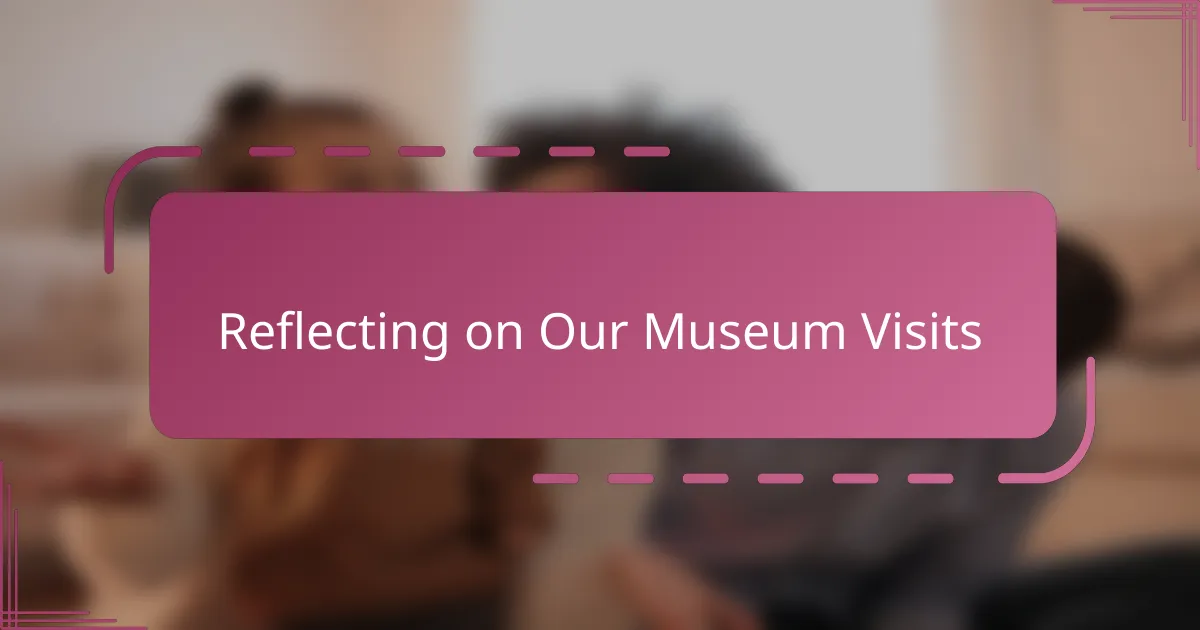
Reflecting on Our Museum Visits
Looking back on our museum visits, I realize how much those moments stirred more than just learned facts—they fostered genuine wonder. Each exhibit seemed to spark a new question or observation from my child, and in those instances, I felt a shared excitement that made me appreciate the power of hands-on learning. Have you noticed how those small sparks of curiosity often turn into lasting memories?
What stands out most in my mind is the way our visits brought us closer together. Watching my child’s eyes widen with amazement, and hearing their spontaneous “why” and “how” questions, created a natural dialogue I treasure. Reflecting now, I see that those museum trips were as much about bonding as they were about education.
Sometimes, I catch myself thinking about the quiet moments too—pauses when my child absorbed information at their own pace. Those times reinforced the value of slowing down and letting learning unfold naturally. Doesn’t it make you wonder how often we rush through experiences instead of savoring them? For me, embracing those reflective moments has been key to making our museum visits truly meaningful.
